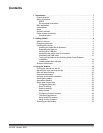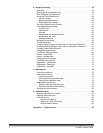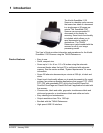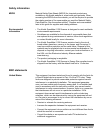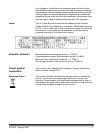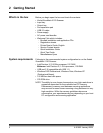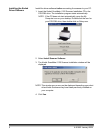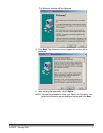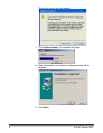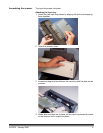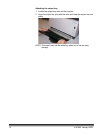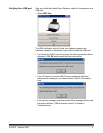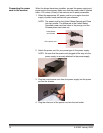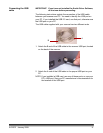
2 A-61602 January 2008
Safety information
MSDS Material Safety Data Sheets (MSDS) for chemical products are
available on the Kodak website at: www.kodak.com/go/msds. When
accessing the MSDSs from the website, you will be required to provide
the catalog number of the consumable you want the Material Safety
Data Sheet for. See the section entitled, “Supplies and consumables”
later in this guide for supplies and catalog numbers.
Environmental
information
• The Kodak ScanMate i1120 Scanner is designed to meet worldwide
environmental requirements.
• Guidelines are available for the disposal of consumable items that
are replaced during maintenance or service; follow local regulations
or contact Kodak locally for more information.
• The Kodak ScanMate i1120 Scanner contains lead in the circuit
board solder, glass lens, mercury in the lamps, and Chromium VI
used as corrosion protection on the metal frame. Disposal of this
material may be regulated due to environmental considerations. For
disposal or recycling information, contact your local authorities or, in
the USA, visit the Electronics Industry Alliance website:
www.eiae.org.
• The product packaging is recyclable.
• The Kodak ScanMate i1120 Scanner is Energy Star compliant and is
shipped from the factory with the default time set to 15 minutes.
EMC statements
United States This equipment has been tested and found to comply with the limits for
a Class B digital device pursuant to Part 15 of the FCC rules. These
limits are designed to provide reasonable protection against harmful
interference in a residential installation. This equipment generates,
uses, and can radiate radio frequency energy and, if not installed and
used in accordance with the instruction manual, may cause harmful
interference to radio communications. However, there is no guarantee
that interference will not occur in a particular installation. If this
equipment does cause harmful interference to radio or television
reception, which can be determined by turning the equipment off and
on, the user is encouraged to try to correct the interference by one or
more of the following measures:
• Reorient or relocate the receiving antenna.
• Increase the separation between the equipment and receiver.
• Connect the equipment into an outlet on a circuit different from that to
which the receiver is connected.
• Consult the dealer or an experienced radio/TV technician for
additional suggestions.




